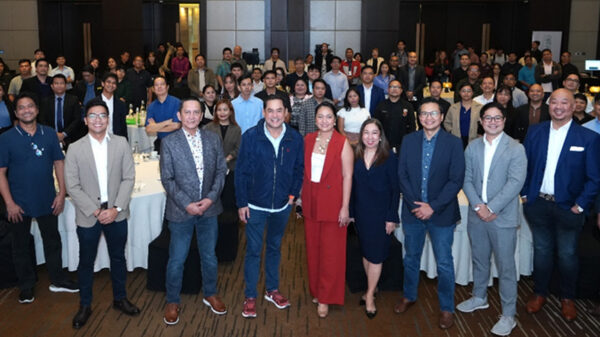Trend Micro Incorporated, a global cybersecurity player, revealed that cyber risk levels in Asia Pacific (APAC) have improved from the first half to the second half of 2022, according to its latest survey on cyber risk. Nevertheless, organizations remain pessimistic about the threat landscape, with 82% anticipating successful attacks this year.
The findings come from Trend Micro’s biannual Cyber Risk Index (CRI) report, which measures the gap between respondents’ cybersecurity preparedness versus their likelihood of being attacked. In the second half of 2022, the CRI surveyed more than 3,700 CISOs, IT practitioners, and managers across North America, Europe, Latin/South America, and APAC.
In APAC, enhanced cyber preparedness is a key driver of improved cyber risk levels—which has shifted from “elevated” to “moderate”. However, organisations cannot rest on their laurels with the prospect of threats looming.
The threats that APAC organisations are most worried about this year are as follows:
- Three in four organizations cited that it was “somewhat to very likely” that they would suffer a breach of customer data (74%), intellectual property (74%) or a successful cyberattack (82%).
- These figures represent declines of just 2%, 4% and 7% respectively, from the results of the CRI in the first half of 2022.
Nilesh Jain, Vice President, Southeast Asia & India, Trend Micro: “We’ve seen a drastic improvement in the APAC cyber risk index since the first half of 2022, with figures moving into positive territory at 0.05 from negative levels. This is a promising result as it means that organizations have greatly stepped up to improve their cyber preparedness. It is crucial for organizations to continue this momentum by focusing on the threats that matter most to their business this year. The first step is to gain complete and continuous attack surface visibility and control.”
“To address new complexities arising from an expanding attack surface, security teams need to bolster their capabilities in proactive attack surface risk management. On top of architecture improvements for enhanced interoperability, scalability and agility, having a unified cybersecurity platform with extended detection and response (XDR) capabilities is also critical in enhancing security teams’ visibility and response to cyberthreats across internal and external systems, accounts and devices. This would give organizations a leg-up in understanding, communicating, and mitigating expected risks.”
The Philippines’ cyber risk declines
Although the Philippines continues to experience “elevated” risk levels, there has been some improvement since the first half of 2022, with cyber risk declining and preparedness improving.
Table 1: Cyber Risk in APAC & Philippines Time frame Cyber Risk Index & Risk Label Business Implications (Elevated Risk) APAC Philippines First half of 2022 -0.11Elevated risk -0.21Elevated risk ● High likelihood of a compromise● Some ability to detect new threats● Low visibility of threats within network● Lack of an incident response process Second half of 2022 0.05Moderate risk -0.06Elevated risk
However, local organizations remain strongly on guard with over 80% of organizations citing that they are “somewhat to very likely” to experience a breach in customer data (82%), intellectual property (82%), or successful cyberattack (87%) in the next 12 months.
Expected cyber threats in the Philippines & APAC this year
Organizations in the Philippines and APAC cited ransomware, business email compromise, and botnets among the top five cyber threats that they expect to experience this year.
Table 2: Top 5 Expected Cyber Threats APAC Philippines Business Email Compromise (BEC)RansomwareClickjackingBotnetsCrypto-mining RansomwareBusiness Email Compromise (BEC)BotnetsWatering Hole AttacksDenial of Service (DoS)
Current infrastructure security risks of organisations in the Philippines & APAC
In APAC and the Philippines, primary infrastructure risks cited are people related. Respondents in the Philippines and across the region named employees/personnel as representing three of their top five infrastructure risks.
Table 3: Top 5 Current Security Risks in Infrastructure APAC Philippines Negligent insidersCloud computing infrastructure and providersShortage of qualified personnelMobile/remote employeesOrganisational misalignment and complexity Negligent insidersShortage of qualified personnelCloud computing infrastructure and providersOrganisational misalignment and complexityMobile or remote employees
Ian Felipe, Country Manager, Trend Micro Philippines: “Hybrid work has become the norm in the Philippines—Trend Micro’s recent Risky Rewards study revealed that 78% of Filipino businesses believe that offering the ability to work from anywhere has become vital in the war for talent. At the same time, 62% believe there is a strong connection between cybersecurity and overall business risk. Local organisations thus need to master a balancing act between offering employees flexibility and minimising both the security and business risks that arise. Armed with the insights provided by the CRI, CISOs and CIOs in the Philippines can now better evaluate not only the technology solutions, but its people and processes to help mitigate cyber risks across the enterprise.”








































































































